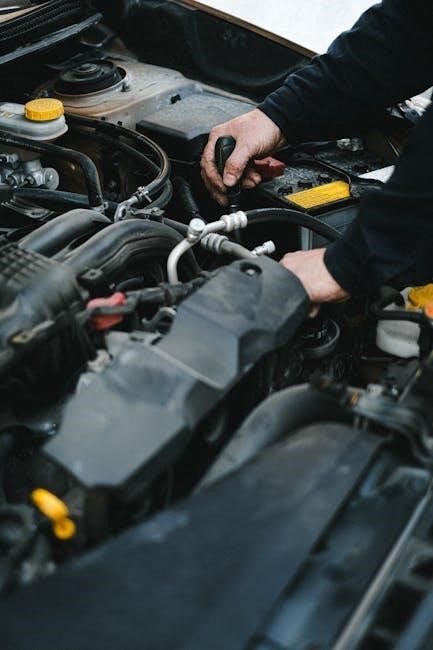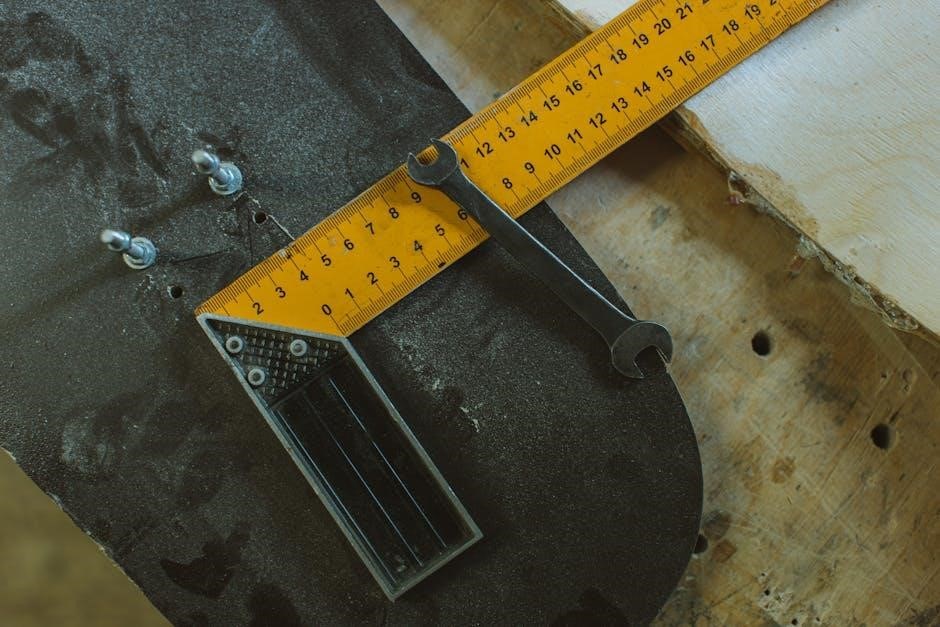Cessna 172P Maintenance Manual: A Comprehensive Guide
This comprehensive guide dives into Cessna 172 aircraft maintenance, offering practical tips and addressing common concerns․ We provide how-to advice for Cessna 172P servicing and care, helping owners get the most from their aircraft․
The Cessna 172P, a variant of the Skyhawk line, necessitates diligent maintenance for safe and continued operation․ This guide provides a comprehensive overview of the Cessna 172P, focusing on its maintenance requirements and procedures․ Understanding the aircraft’s specifications, such as its 123-knot cruise speed and 700-feet-per-minute climb rate, is crucial for effective maintenance;
This manual references Cessna Service Information Letters and News Letters, which are published by Cessna Aircraft Company․ The manual outlines the importance of regular inspections, as well as proper handling, servicing, and maintenance․ It underscores the necessity of keeping temporary revisions readily accessible for quick reference․ Progressive care is recommended for aircraft flown 200 hours or more per year, emphasizing 100-hour inspections․

This introduction sets the stage for detailed explorations of specific maintenance tasks and considerations․ It covers everything from engine overhauls to electrical system upkeep and airframe repairs․
Handling, Servicing, and Maintenance Overview

This section details the essential aspects of handling, servicing, and maintaining the Cessna 172P․ Proper handling ensures the aircraft’s longevity and operational safety․ Servicing involves routine tasks like refueling, oil checks, and tire pressure maintenance․ Regular servicing helps prevent minor issues from escalating into major repairs․ Effective maintenance encompasses scheduled inspections, component replacements, and necessary repairs․
Adherence to Cessna’s recommended maintenance practices is paramount․ The Cessna Owner Advisory service provides valuable updates and recommendations․ Owners must use sampler cups to drain fuel from tank sumps․ This action helps to check for contaminants․ Progressive care, involving frequent inspections, is vital for aircraft used extensively․ Replacement, rather than repair, may be more cost-effective for certain components․
Properly inflated tires contribute to safe taxiing and takeoff․ Regular engine checks can identify potential problems early․ Keeping the aircraft clean prevents corrosion and maintains its appearance․ This overview emphasizes the importance of a proactive approach to ensure continued airworthiness․
Maintenance Schedule and Inspections
A well-defined maintenance schedule is crucial for the Cessna 172P’s airworthiness․ The schedule outlines routine inspections and maintenance tasks․ Regular inspections identify potential issues before they become critical failures․ Cessna recommends progressive care for aircraft flown over 200 hours annually․ Progressive care complements 100-hour inspections, ensuring thorough maintenance․
A typical 100-hour inspection, common for commercial aircraft, follows a pre-approved schedule․ Annual inspections are also essential, covering a comprehensive evaluation․ These inspections are performed in accordance with a pre-approved maintenance schedule․ Detailed inspection checklists ensure no critical area is overlooked․ Specific intervals, such as 1500 flight hours, trigger engine inspections․
Temporary revisions to maintenance manuals should be carefully noted․ They can be collected in a binder for quick reference․ Adhering to these revisions is essential for up-to-date maintenance practices․ Regular inspections and scheduled maintenance are key to the Cessna 172P’s safe and reliable operation․
Common Maintenance Procedures for Cessna 172P
Several common maintenance procedures are vital for the Cessna 172P․ These procedures ensure the aircraft’s continued safe operation․ One frequent task is draining fuel from the fuel tank sump․ Use the fuel selector quick-drain to collect a eupful sample․ This process helps remove contaminants and water from the fuel system․ Oil filter replacement is another routine task, essential for engine health․
Replacing an oil filter, such as the AA48108-2 spin-on, is cost-effective․ Mechanics typically charge around $100 for labor on top of the filter cost․ Repairing ABS components may involve using Rezolin Repair Kit Number 404․ This kit is available from the Cessna Service Parts Center․ Maintaining proper tire pressure is also crucial for safe landings and takeoffs․
Regularly checking and adjusting tire pressure prevents premature wear․ Inspecting control cables and linkages ensures smooth flight control․ Lubricating moving parts reduces friction and prevents corrosion․ These procedures, combined with adherence to the maintenance schedule, are essential for maintaining the Cessna 172P’s reliability and performance;
Engine Maintenance and Overhaul
Maintaining the engine of a Cessna 172P is critical for its reliable operation and longevity․ Regular inspections are a key part of this process, including checking for any signs of overheating․ If an engine exhibits an overheated gauge, the aircraft must be grounded immediately․ Engines are typically subject to a more thorough inspection every 1500 hours of flight time․ These inspections help identify potential issues before they become major problems․
Overhaul procedures are necessary when an engine reaches its TBO (Time Between Overhauls)․ Overhauling involves disassembling the engine, inspecting all components, and replacing worn or damaged parts․ Cylinders, pistons, valves, and bearings are carefully examined and replaced as needed․ The crankshaft is checked for cracks and wear, and the entire engine is reassembled with new gaskets and seals․
After the overhaul, the engine undergoes rigorous testing to ensure it meets performance specifications․ This testing includes checking compression, oil pressure, and fuel consumption․ Proper engine maintenance and timely overhauls are essential for safety and optimal performance․

Electrical System Maintenance
Maintaining the electrical system of a Cessna 172P is crucial for ensuring safe and reliable operation․ Regular inspections should include checking the battery’s condition, ensuring proper voltage output, and verifying that all connections are clean and secure․ Corroded or loose connections can lead to intermittent failures and potentially hazardous situations․ Inspect the wiring for any signs of damage, such as frayed insulation or exposed conductors․ Damaged wiring should be repaired or replaced immediately to prevent short circuits or electrical fires․
The alternator or generator is another critical component of the electrical system․ Verify that it is producing the correct voltage and amperage output․ Faulty alternators can lead to a gradual discharge of the battery, resulting in loss of electrical power during flight․ Test the circuit breakers and fuses to ensure they are functioning correctly and providing adequate protection․ Replace any faulty breakers or fuses with the correct amperage rating․
Proper maintenance and troubleshooting of the electrical system are essential for maintaining the airworthiness of the Cessna 172P․
Airframe Repair and Maintenance
Maintaining the airframe of a Cessna 172P is paramount for ensuring structural integrity and flight safety․ Regular inspections are crucial for identifying any signs of corrosion, cracks, or other damage․ Pay close attention to areas prone to stress, such as wing spars, control surfaces, and landing gear attachment points․ Any detected damage must be addressed promptly by a qualified aircraft mechanic following the procedures outlined in the maintenance manual․
Corrosion is a common issue in aircraft airframes, especially in humid environments․ Inspect the airframe for any signs of corrosion, such as pitting or surface rust․ Remove any corrosion and treat the affected area with appropriate corrosion inhibitors to prevent further damage․ Repairing cracks in the airframe requires specialized techniques and materials․ Depending on the severity and location of the crack, it may be necessary to weld, patch, or replace the affected section․
Proper airframe maintenance is essential for extending the lifespan of the aircraft and ensuring continued airworthiness․
Component Repair and Replacement
The Cessna 172P comprises numerous components, each with a specific lifespan and maintenance requirements․ This section addresses the repair and replacement of these components, emphasizing adherence to the maintenance manual’s guidelines․ When a component fails or reaches its service life limit, it must be either repaired or replaced to maintain the aircraft’s airworthiness․
Before attempting any repair or replacement, consult the maintenance manual for detailed instructions, torque specifications, and safety precautions․ Some repairs can be performed in the field, while others require specialized equipment and expertise․ For instance, repairing ABS components may require a Rezolin Repair Kit Number 404, obtainable from the Cessna Service Parts Center․
When replacing components, always use genuine Cessna parts or FAA-approved equivalents to ensure proper fit and function․ After completing any repair or replacement, thoroughly inspect the work to verify its correctness and functionality․ Proper component maintenance ensures the Cessna 172P operates safely and reliably․
Accessing and Using the Cessna 172P Maintenance Manual

The Cessna 172P Maintenance Manual is an indispensable resource for aircraft owners and maintenance personnel․ It provides detailed instructions for maintaining, inspecting, and repairing the aircraft․ Accessing and effectively using this manual is crucial for ensuring the aircraft’s airworthiness and safety․ The manual is typically available in digital (PDF) format, allowing for easy access and searchability․
To use the manual effectively, familiarize yourself with its structure and organization․ The manual covers various topics, including general maintenance, engine maintenance, electrical systems, and airframe repairs․ Pay close attention to the effectivity statements, as they specify which aircraft models and serial numbers the information applies to․ Consult service bulletins and temporary revisions for the latest updates and modifications․
When performing maintenance tasks, carefully follow the instructions and torque specifications provided in the manual․ Always prioritize safety and use appropriate tools and equipment․ A thorough understanding of the manual is essential for maintaining the Cessna 172P to its highest standards․
Owner Advisory Service and Publications
Cessna offers an Owner Advisory Service designed to keep aircraft owners informed about important maintenance updates and safety information․ By submitting a valid Owner Advisory Application, owners receive notifications of service bulletins, service information letters, and Cessna News Letters․ This service ensures that owners are aware of any potential issues affecting their Cessna 172P, enabling them to take proactive measures to maintain its airworthiness․
In addition to the Owner Advisory Service, Cessna provides a range of publications to support aircraft maintenance and operation․ These publications include Pilot Operating Handbooks, Maintenance Manuals, and parts catalogs․ The Pilot Operating Handbook contains essential information about the aircraft’s equipment, operating procedures, and performance characteristics․ The Maintenance Manual provides detailed instructions for maintaining and repairing the aircraft, while the parts catalog helps identify and order necessary replacement parts․
Utilizing these resources ensures owners have the information needed for safe and efficient operation․

